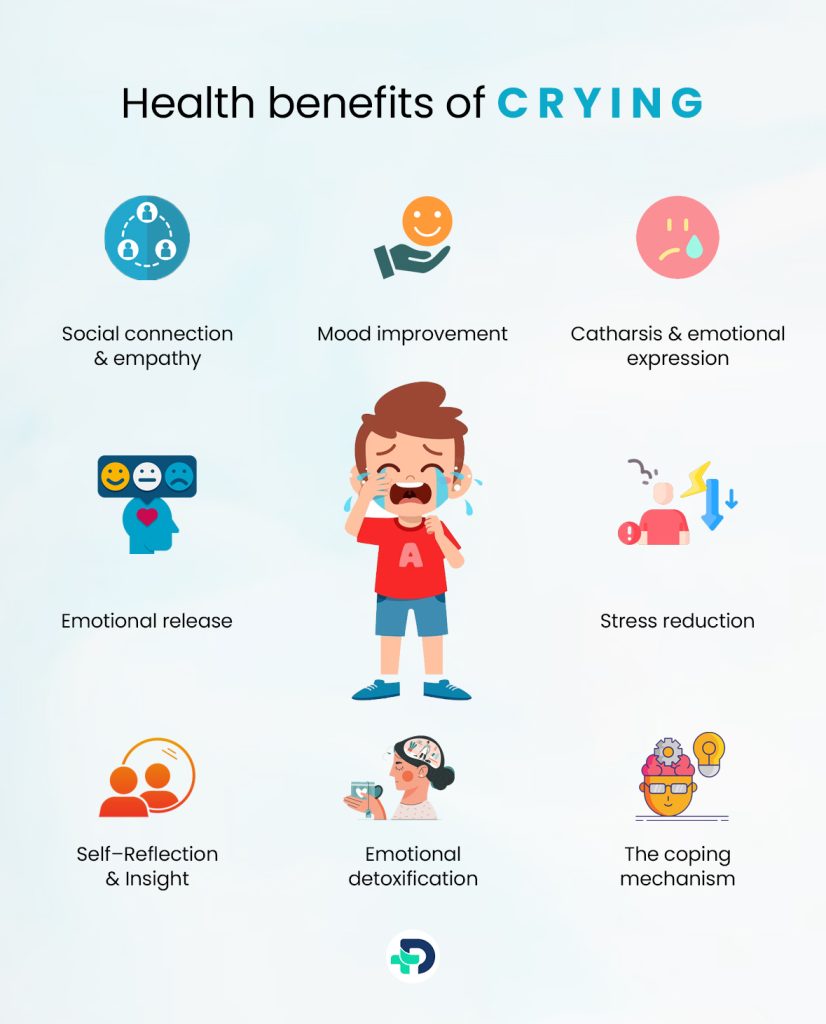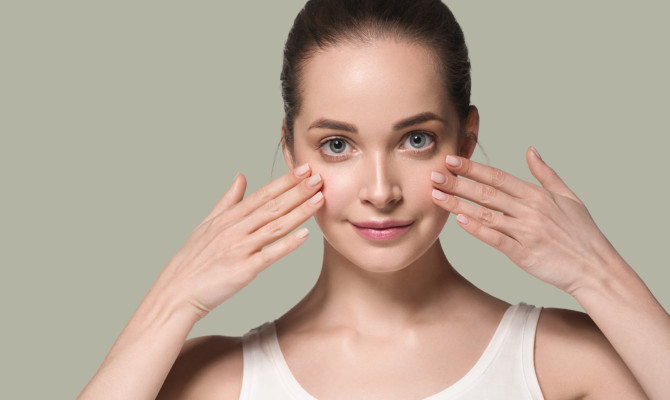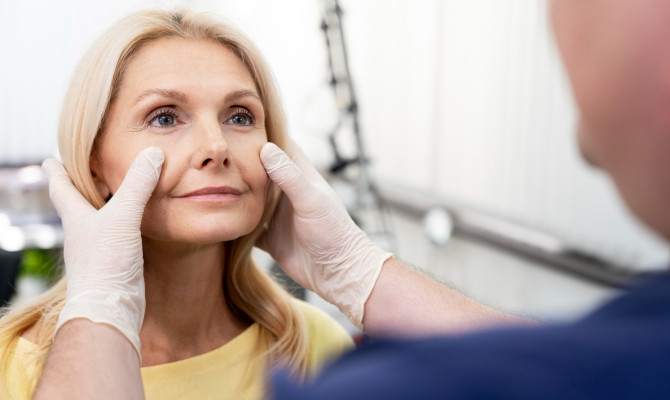Does Crying Help You Burn Calories? Benefits & Disadvantages of Crying

- Weight Loss
- 15 Sep 2023
Introduction
Crying & Burning Calories
Crying is a universal human experience that often accompanies moments of intense emotion, from happiness and relief to sadness and frustration. It’s no secret that shedding tears can bring a sense of emotional release and catharsis. However, a curious motion has recently circulated- the idea that crying could help burn calories. Could something as involuntary and emotionally driven as shedding tears contribute to our caloric expenditure? We will explore the science behind crying, its effects on our bodies, and whether the connection between crying and calories holds any truth. Join us on a journey through the physiology of Tears, the basics of caloric expenditure, and the relationship between our emotional metabolism and overall well-being.

Health Benefits

What are the benefits of crying?
The health benefits of crying, often associated with vulnerability, carry a range of psychological and emotional benefits that contribute to overall well-being, including
- Stress reduction
- Mood improvement
- Emotional Expression
- Emotional release
- Social connection
- Self-Reflection
- Emotional detoxification
- The coping mechanism
Stress reduction
- It can act as a valve to release stress and tension. Emotional tears contain stress-related hormones and Chemicals, and shedding them may help reduce their presence in the body.
- This can lead to a sense of emotional relief and relaxation, thereby lowering stress levels.
Mood improvement
- Emotional tears are believed to trigger the release of endorphins, the body’s natural feel-good hormone. They contribute to an improved mode, increased happiness, and reduced pain perception.
- It can alleviate sadness, anxiety, and frustration through emotional healing.
Catharsis and emotional expression
- It serves as a form of emotional expression and catharsis.
- It allows people to communicate their feelings when words might fail.
- The act of crying can foster a sense of release and provide a catharsis to process complex emotions.
Emotional release
- It provides an outlet for intense emotions, preventing emotional suppression.
- Feelings can lead to increased stress, negative psychological effects, and even physical health issues.
Social connection and empathy
- Tears can elicit empathetic responses from others, facilitating social connections.
- Witnessing someone cry often triggers a desire to offer comfort and support.
- This poster creates emotional bonds and strengthens social relationships.
Self–Reflection and Insight
- Can encourage introspection and self-awareness
- Acknowledging emotions and allowing oneself to cry promotes a deeper understanding of personal feelings and experiences.
Emotional detoxification
- Emotional tears may help the body eliminate toxins accumulated during stress.
- This process contributes to an improved sense of well-being and emotional clarity.
The coping mechanism
- Serves as a healthy coping mechanism for navigating challenging situations and clauses.
- It enables people to process grief, disappointment, and other difficult emotions in a constructive way.
- From stress reduction and mood improvement to fostering social connections and promoting self-awareness, tears play a crucial role in maintaining emotional equilibrium and supporting overall mental health. 1 Health Benefits | Researched based study from Research Gate
Tears
Types of tears & their functions
Tears associated with emotional responses is complex in their function for various purposes. They serve as more than just a conduit for emotional expression and play a vital role in maintaining eye health and protecting against irritants’ vision.
Understanding the different types of tears and their functions is vital to grasping their role beyond just shedding light on our emotions.
Basal tears
- They are ever present in our eyes, lubricating the cornea to ensure smooth blinking and prevent friction.
- They help nourish the ice surface and maintain optimal vision.
- These tears are produced constantly regardless of emotional State.
Reflex tears
- They are triggered in response to irritants, such as dust smoke or chopping onions.
- They are the body’s way of flushing out potential safeguarding the eye.
Emotional tears
- As the name suggests, they are linked to our feelings and emotional experiences.
- They contain additional proteins and hormones not found in basal or reflected tears.
- These components are believed to have a role in stress reduction and mood regulation. 11 Tears | Researched based study from National Library of Medicine
Can tears clear skin?
- Tears, specifically the basal and reflected tears produced naturally by our eyes, have some limited benefits for the skin, particularly around the eye area.
- Reflex tears can help flush out potential irritants from the eye and indirectly prevent rubbing and irritation that might affect the skin around the eyes—however, more than these benefits are needed to consider it as a primary skin care solution.
Calorie Expenditure
Basics of calorie expenditure
Calories are units of energy that our body is required to perform various activities, and maintain essential functions.Understanding that the body burn calories and the factors that contribute to energy expenditure is crucial in evaluating the potential impact of activities like crying on overall calorie burn.
Metabolic rate
- The energy expended by the body at rest to maintain vital function in circulation and cell production.
Physical activity
- The energy used during voluntary movements, exercise, and daily activities.
Thermic effect of food
- Energy spent during digestion absorption and metabolism of ingested food.
Non-exercise activity thermogenesis (NEAT)
- Energy expended during non-exercise activities like while standing and maintaining posture.
Basal metabolic rate
- BMR accounts for the most significant portion of daily calorie expenditure.
- It’s influenced by factors like age, gender, weight, and lean muscle mass.
- It is the energy required to maintain basic physiological functions in a fasting state and at a comfortable temperature.
Total energy expenditure (TDEE)
- It is the sum of BMR physical activity and the thermic effect of food and NEAT.
- It represents the total calories burnt in a day and determines weight maintenance gains or loss. 4 Calorie Expenditure| Researched based study from National Library of Medicine ,5 Calorie Expenditure| Researched based study from National Library of Medicine
Role of calorie intake
- Weight loss occurs when the calorie expected exceeds the intake.
- Weight gain happens when calorie intake exceeds expenditure.
- To maintain weight, calorie intake and expenditure should balance. 2 Calorie Expenditure | Researched based study from Research Gate
Crying & Calories
How many calories does crying burn?
While the connection between crying and caloric expenditure is an intriguing concept, scientific studies on the specific topic are limited. Nevertheless, researchers have explored the potential effects of emotional and physical activities on energy expenditure, shedding some light on the matter.
Studies and research
- Studies on emotional responses and metabolism suggested that emotional experiences can trigger physiological changes, including alterations in heart rate and breathing patterns.8 Crying and Calories | Researched based study from National Library of Medicine
- A study showed that crying due to emotional distress might lead to an increase in heart rate and an elevated metabolic rate. 9 Crying and Calories | Researched based study from National Library of Medicine
- However, these changes are generally considered to be relatively small and short-lived compared to calorie burn during other activities that involve more physical exertion, such as brisk walking, jogging, or even laughing tends to result in a more significant increase in heart rate and metabolic rate compared to crying.
Influencing Factors
Factors influencing calorie expenditure
Several factors contribute to the caloric expenditure associated with activities like crying, but individual variations and the nature of the movement often affect their impact.
Duration of activity
- Longer periods of activity generally lead to higher caloric expenditure.
- Crying sessions through emotionally charged are usually shorter than activities involving sustained physical effort.
Individual metabolism
- Basal metabolic rate varies among individuals due to age, gender, genetics, and body composition.
- Those with higher basal metabolic rates might experience slightly more noticeable calories during emotional episodes, but the overall effect remains limited.
Negligible impact of crying on caloric burn
While it might lead to subtle physiological changes, its effect on calorie expenditure is likely to be negligible for several reasons:
- The energy expended during crying is generally short-lived and not sustained like in exercises.
- Emotional responses are not typically associated with the sustained increase in heart rate and metabolism needed for notable calorie burning.
- Other activities, such as mild exercise or engaging in physical tasks, result in more prolonged and significant increases in calorie loss. 7 Influencing Factors| Researched based study from National Library of Medicine
Emotional eating and weight management
Emotional eating and weight gain
- It involves turning to food as a response to emotional triggers like stress, sadness, or boredom.
- Comfort foods are often high in calories, sugar, and unhealthy fats are commonly chosen during emotional eating episodes.
- Consistently leading can contribute to weight gain over time due to excessive calorie consumption.
Emotional eating and Weight Loss Efforts
- It can hinder weight loss efforts by delaying planned healthy eating patterns.
- Emotion-conscious decisions leading to overriding and consumption of calorie-dense foods.
- It creates a cycle where weight loss attempts are repeatedly stabilized by emotional triggers.
- Caution against using crying as a weight control strategy
Unreliable method
- Crying as a strategy for weight control is not reliable or effective.
- The calorie burn associated with crying is minimal and short lived.
Emotional well being
- Emotional response with its benefits: Manipulating it solely for calorie burning undermines its purpose and can negatively impact mental health.
Healthy habits
- Effective weight management involves adopting sustainable habits like a balanced diet and regular exercise.
- Relying on sporadic activities like crying ignores the holistic approach needed for successful weight control. 6 Influencing Factors| Researched based study from National Library of Medicine
Disadvantages
What are the disadvantages of Crying?
While it has benefits, there are potential disadvantages to consider in certain situations and contexts. It’s important to recognize when crying might have negative response sequences and to address these issues appropriately:
Social stigma
- In some cultures, and environments, crying may be perceived as a sign of weakness or vulnerability.
- This stigma can lead people to be surprised by their emotions and avoid expressing their feelings openly.
Miscommunication
- It can sometimes be misinterpreted, leading to misunderstandings about the underlying emotions.
- People might assume the wrong reasons for tears, which can complicate interpersonal dynamics.
- Interference with communication and excessive crying can hinder effective communication during discussions or negotiations.
Emotional exhaustion
- In a frequent crying, especially accompanied by emotional experiences, can lead to emotional exhaustion.
- Emotional fatigue can impact overall well-being and prevent individuals from fully engaging in daily activities.
Emotional suppression
- Avoiding it all altogether might lead to emotional suppression. Suppressing emotions can lead to mental health issues such as anxiety and depression.
- The unintended burden on others while sharing emotions can foster connections. Friends, family, or colleagues might feel obligated to provide support even if not equipped.
Physical effects
- It can also lead to Physical discomfort, including headache, redness, and foxiness around the eyes.
- Physical symptoms might be related to negative emotions and contribute to an ongoing cycle of distress. 3 Disadvantages | Researched based study from National Library of Medicine
Seek Help
When to seek medical help for Crying?
Persistent sadness
- If you consistently feel sad, down, or hopeless, and this emotional State persists for an extended period, it could indicate depression.
Excessive crying spells
- Experiencing frequent and uncontrollable crying spells that interfere with your daily activities and relationships might mean an underlying emotional or psychological issue.
Loss of interest
- If you have lost interest in activities you used to enjoy, have lack of energy, or have difficulty concentrating, you might be dealing with a mental health condition.
Suicidal thoughts
- If you have thoughts of self-harm or suicide, seeking immediate help from a mental health professional or helpline such as a crisis hotline is crucial.
Disruption in functioning
- If crying is significantly affecting your ability to work, or carry out daily tasks, it might be time to seek support.
Sudden changes
- If you experience an impulsive and explained shift in mood, behavior or emotions could be a sign of underlying mental health issues.
Traumatic events
- If you have experienced a traumatic event and are finding it difficult to cope with, seeking help from a therapist or counselor can be beneficial.
- If you have pre-existing mental health conditions, such as anxiety or bipolar disorder, and you notice worsening of symptoms, it’s a good idea to reach out for support.
FAQs
Frequently Asked Questions on Crying & Calorie burn
How many calories does 10 minutes of crying burn?
- On average, it might lead to a slight increase in heart and metabolic rates, contributing to a tiny calorie burn. It is estimated that the calorie burns roughly at the same amount as laughing, so for 10 minutes would likely be in the range of 5 to 15 calories at most. 10 FAQs | Researched based study from National Library of Medicine
Does being sad burn calories?
- Experiencing sadness or any emotional distress can potentially lead to a slight increase in caloric expenditure to stress.
Any feedback on this article?
 This Articles content was accurate
This Articles content was accurate Very Informative Article
Very Informative Article I have a question or a comment
I have a question or a comment
 This article contains inaccurate content
This article contains inaccurate content This article was not helpful
This article was not helpful I have a question or a comment
I have a question or a comment
We appreciate your helpful feedback!
Checkout our social pages
References
-
Research Gate
Health benefits
-
Research Gate
Calorie Expenditure
-
National Library of Medicine
Disadvantages
-
National Library of Medicine
Calorie Expenditure
-
National Library of Medicine
Calorie Expenditure
-
National Library of Medicine
Influencing Factors
-
National Library of Medicine
Influencing Factors
-
National Library of Medicine
Crying and Calories
-
National Library of Medicine
Crying and Calories
-
National Library of Medicine
FAQs
-
National Library of Medicine
Tears




































